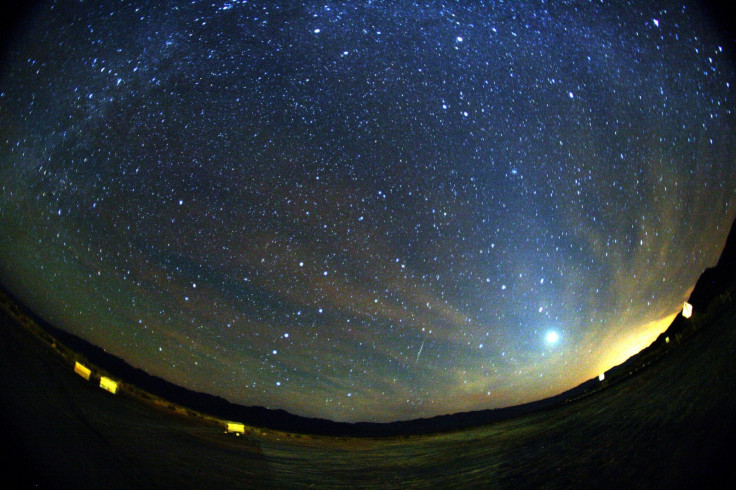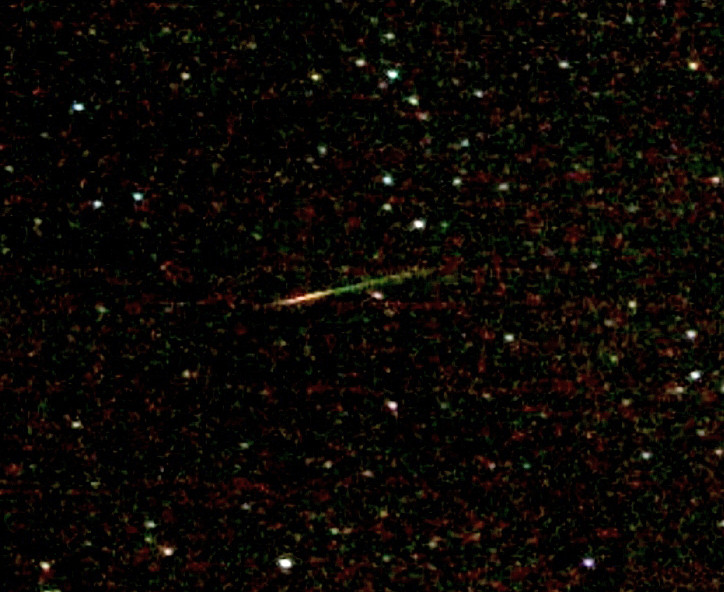Orionids Meteor Shower 2014: What Connects the Most Prolific Shooting Stars and Halley's Comet?

The Orionid meteor shower is set to dazzle skywatchers for the second night in a row tonight (21 October) as the shooting stars appear in relatively clear skies.
Unlike the Perseid meteors in August, the Orionids are not competing with a supermoon, so should be easier to spot.
The Orionids were also visible between midnight and dawn on 21 October, with as many as 25 "falling" stars an hour. The Slooh Community Telescope will provide an online live stream of the event.
What are the Orionids and what do they have to do with Halley's Comet?
This meteor shower is produced by the well-known Halley's Comet, officially called 1P/Halley, which is the most recognised of the short-period comets. It is visible from Earth every 75 to 76 years. Essentially, Halley is the parent body of the Orionids.
When the comet passes through the solar system, it trails debris through space. When rock particles break away from Halley and burn up through the Earth's upper atmosphere, the sky appears to be full of "shooting stars" – the Orionids. The shower appears annually in late-October.
The meteor shower is given its name as the meteors appear to be originating from the constellation Orion, located on the celestial equator. Named after the Greek mythology hunter Orion, the constellation is one of the most recognisable and visible in the night sky.

"Earth is passing through a stream of debris from Halley's Comet, the source of the Orionids. Bits of comet dust hitting the atmosphere should give us a couple dozen meteors per hour," Bill Cooke, of Nasa's Meteoroid Environment Office, said in a statement.
"Be prepared for speed," Cooke told the Tech Times. "Meteoroids from Halley's Comet strike Earth's atmosphere travelling 148,000mph. Only the November Leonids are faster."
Jupiter will also make an appearance at the same time, rising in the east, according to Earth Sky.
What do we know about Halley?
Halley is the only naked-eye comet that might appear twice in a human lifetime. It last appeared in the inner Solar System in 1986 and is due to reappear in mid-2061.
The comet's visits have been recorded by astronomers since around 240 BC, detailed by Chinese, medieval European and Babylonian scientists. However, the appearances were not recognised as returns by the same comet. The periodicity of the comet was first documented by 1705, by the English astronomer Edmond Halley.
Halley was captured on camera for the first time in 1910, when the comet passed by around 13.9 million miles (22.4 million km) from Earth, which is about 1/15 the distance between Earth and the Sun.
In 1986, Halley became the first comet to be observed in detail by spacecraft, revealing the structure of a comet nucleus.
According to Space.com, Halley will fly past Earth at 2061 on the same side of the sun as Earth. One astronomer predicted it could be as bright as apparent magnitude -0.3. This is still below the -1.4 magnitude of the brightest star in our planet's sky, Sirius.
After the Orionids, the Leonids shower is set to peak on 17 November. The Geminids are seen in December.
© Copyright IBTimes 2025. All rights reserved.






















